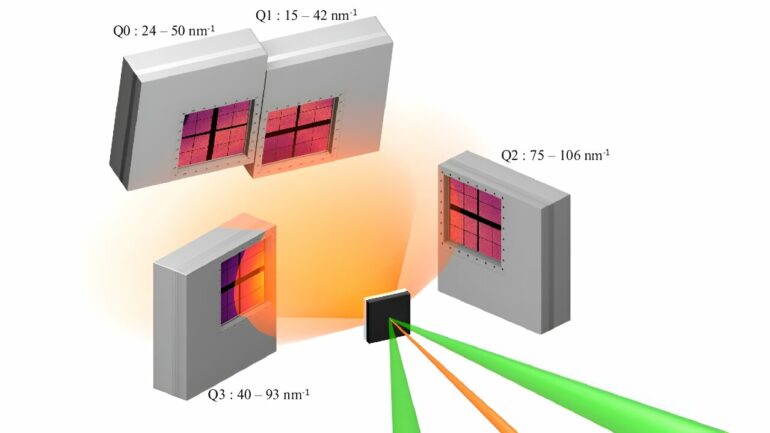Researchers at the Department of Energy’s SLAC National Accelerator Laboratory have revealed new details about Earth’s core-mantle boundary and similar regions found in exoplanets.
The team, led by Guillaume Morard, a scientist at the University of Grenoble and Sorbonne University in France, used SLAC’s Linac Coherent Light Source (LCLS) X-ray laser to investigate the behavior of molten rock under extreme conditions. The results were published in Nature Communications.
“This study marks a significant advance in our understanding of the Earth’s deep interior,” said collaborator and SLAC senior scientist Arianna Gleason. “The findings underscore the potential of advanced X-ray techniques to reveal the hidden secrets of our planet and beyond.”
About 1,800 miles below Earth’s surface lies a roiling region of magma sandwiched between the solid silicate-based mantle and the molten iron-rich core: the core-mantle boundary. It’s a remnant of olden times, about 4.3 to 4.5 billion years ago, when the entire planet was molten. Although the region’s extreme pressures and temperatures make it challenging to study, it contains clues about Earth’s origin story and insight into the planet’s internal processes.
To overcome this challenge, the researchers used advanced X-ray techniques to re-create the conditions expected in the mid to lower mantle of exoplanets two to three times the size of Earth. By using hard X-rays with higher energy levels than previously possible, researchers could see how atoms in the molten rock were arranged. The team also used computer simulations to compare with the experimental data, providing a comprehensive view of the molten silicates’ properties.
One surprising result was about the role of iron in molten rock. Despite expectations, varying the iron content did not significantly change the rock’s density. This finding is particularly relevant to our understanding of Earth’s formation, where the surface was once molten rock and the density difference between crystalline and molten materials significantly influenced the planet’s development.
The study also suggests that this atomic response to compression can change the properties of melts at the pressures expected to be found in the magma oceans of super-Earths, exoplanets with masses nearly three times larger than that of Earth. This could potentially impact their early development differently from smaller rocky planets, such as Earth and Venus in our solar system
The research highlights the importance of advanced experimental tools for studying high-pressure and high-temperature conditions. The team hopes their findings will lead to further development of these tools, opening new research avenues in Earth and planetary sciences.
“Now that we know we can get this quality of data and reach these conditions, we want to push further into exoplanet regimes,” Gleason said. “The ability to generate pressures equivalent to three times Earth’s mantle conditions is exciting. It extends our understanding of silicate properties under extreme conditions, which is crucial for both Earth and exoplanet studies.”
More information:
Guillaume Morard et al, Structural evolution of liquid silicates under conditions in Super-Earth interiors, Nature Communications (2024). DOI: 10.1038/s41467-024-51796-7
Provided by
SLAC National Accelerator Laboratory
Citation:
X-rays advance understanding of Earth’s core-mantle boundary and super-Earth magma oceans (2024, October 3)



